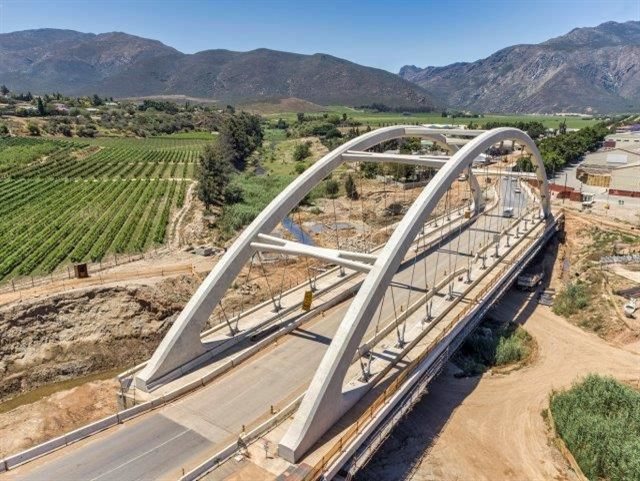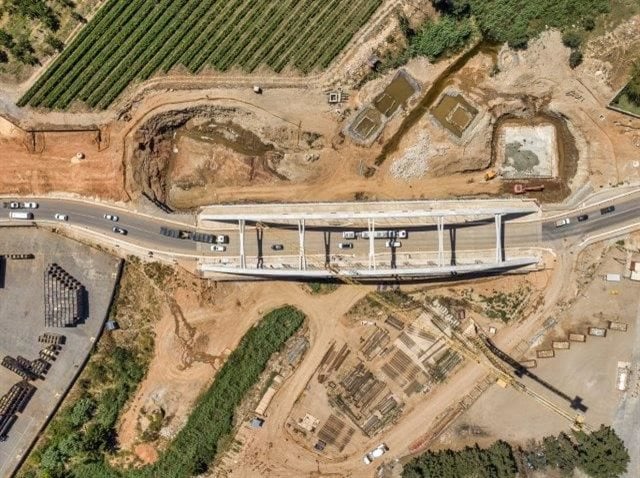SA's first transverse launch of concrete tied-arch bridge complete

Key considerations for the latest upgrading was to minimise flow restriction and improve the available free board within the restrictions of adjacent properties and road alignment levels. Through an economic analysis, the technical options for the river crossing and construction strategy were evaluated with due consideration of the impact of construction strategy on road user costs.
The design that was finally adopted consisted of a single span (110m) concrete tied-arch solution with a deck suspended by stay cables that accommodates four traffic lanes and two walkways. This largely eliminated the possibility of debris build-up and provided the shallowest deck depth option, both key considerations.

Proud monument for the region
Infrastructure consulting firm Aecom was responsible for all engineering aspects of the project, with the emphasis on road and bridge design, as well as project and construction management.
“The successful completion of the new Ashton Arch bridge resulted in a proud monument for the region and all involved. This was a first and unique application of this bridge engineering technique for a concrete tied-arch bridge in South Africa,” comments Abé Newmark, executive, team lead - bridges, Cape Town.

To minimise traffic disruption, the new bridge was constructed adjacent to the existing bridge while maintaining traffic over it. Upon completion, the new bridge was then used as a temporary bypass and river crossing, while the existing bridge was demolished and new abutments built. The new tied-arch bridge was launched transversely into its final position in less than 12 hours on 14 August.
Structural form and bridge aesthetics received meticulous attention during the conceptual design, with due consideration of the following:
- The historical significance of existing multiple-span arch bridges inspired the structural form, combined with the major benefit of the arch’s ability to span over the entire river.
- A tied-arch bridge is particularly suitable for this topographic location.
- V-hanger configuration for its aesthetic advantage.
- Aesthetically, the slender tied-arch design is appropriate due to the visually-appealing light deck.
- The tied-arch form expresses a visualisation of flowing of forces with light hangers.
- Slender members displaying a transparency accentuated by the surrounding mountains.

Bridge analysis software packages were also used for the construction stage analysis, in-service analysis and design, a joint effort by Aecom’s SA and UK long-span complex bridge teams. An extensive structural behaviour monitoring plan was also prepared for construction.
Structural components were designed, manufactured and installed using complex methodology. These included the post tensioned tie-beams, stay anchors and cables, as well as the transverse launching equipment, which had to be specially imported.
































